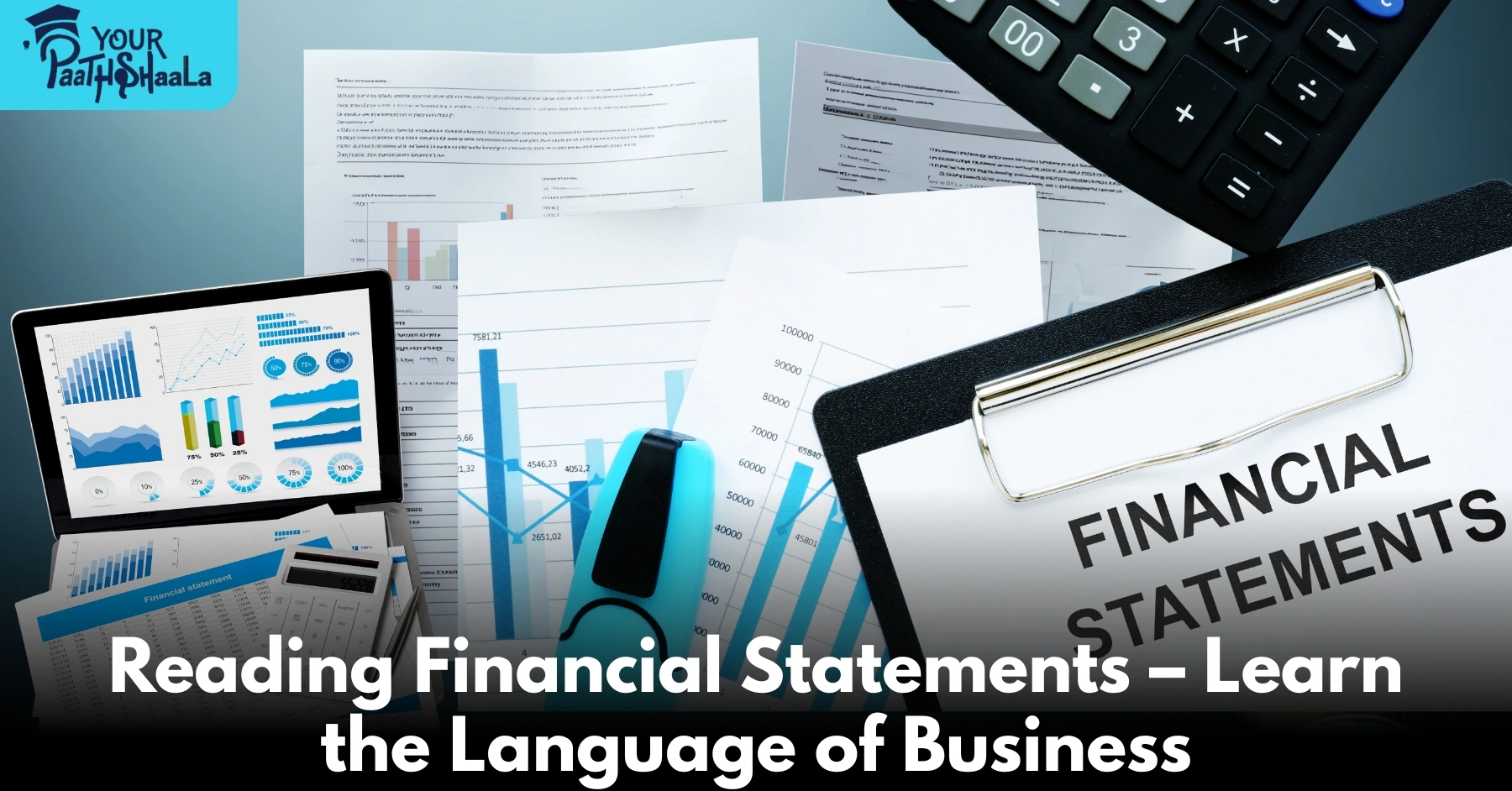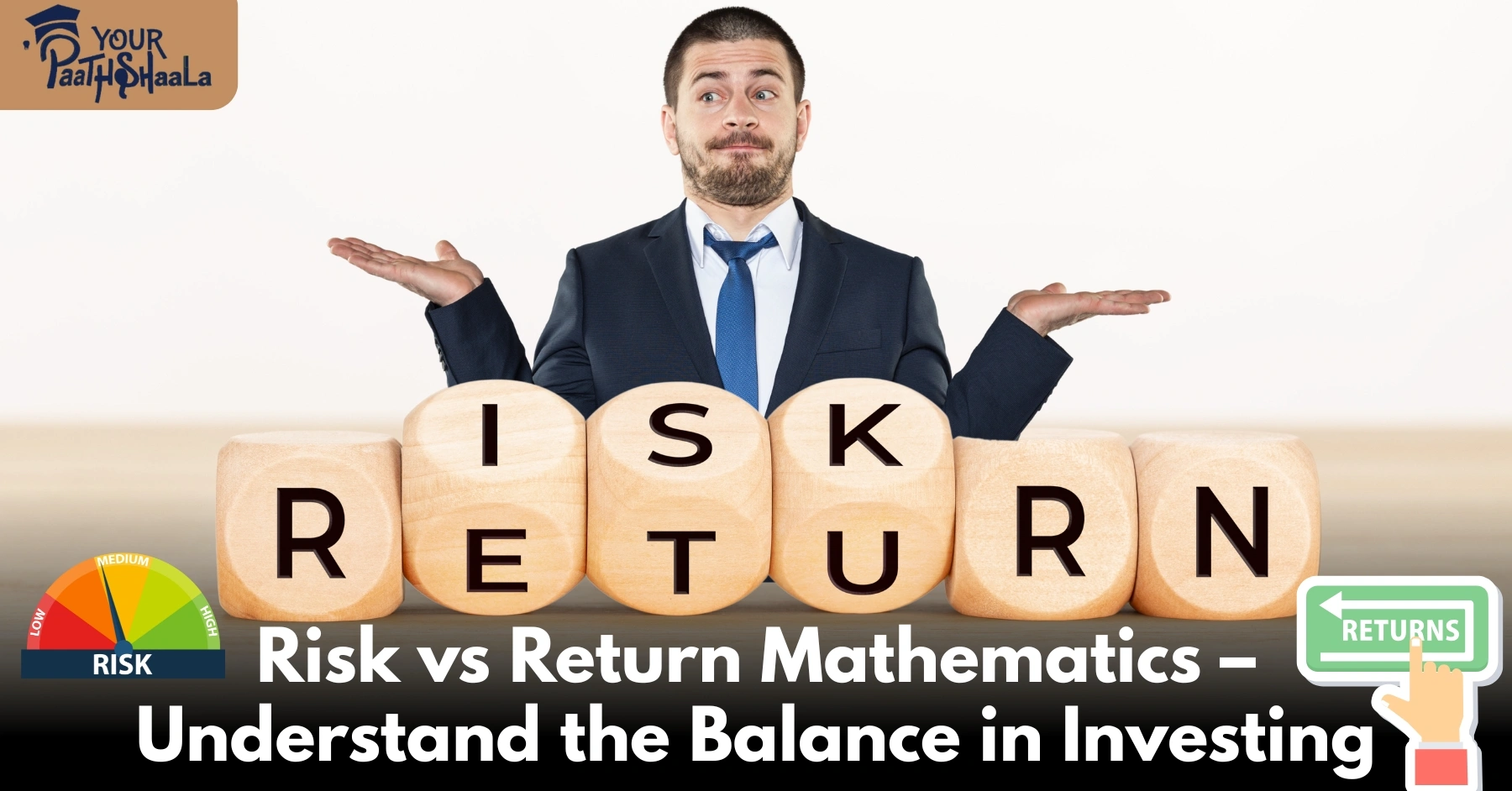Reading Financial Statements – Learn the Language of Business
When you hear a company is “doing well,” what does that really mean? Is it simply selling more products? Is it profitable? Or is it drowning in debt despite reporting growth? These questions can only be answered through financial statements.
Financial statements are the universal language of business. They translate day-to-day activities into numbers that reveal whether a company is strong, weak, growing, or struggling. For investors, entrepreneurs, or even curious learners, understanding financial statements is a powerful skill that helps you see through the noise and focus on the truth.
At YourPaathshaala, we believe financial literacy should not be reserved for accountants or MBAs. Anyone can learn to interpret financial statements with the right guidance. In this article, we will walk through the three main financial statements, explain how to read them step by step, highlight common mistakes, and show you how to connect the dots to make better business and investment decisions.
The Three Core Financial Statements
Every company, whether it is a small business or a global corporation, reports its financial health using three key documents: the income statement, the balance sheet, and the cash flow statement. Together, they provide a complete view of performance.
The Income Statement: Tracking Profitability
The income statement, also called the profit and loss statement, shows how much revenue a business generated and how much profit it kept after covering expenses during a specific time period. It answers the question: Is the company profitable?
The top line of the income statement is revenue. This represents all the money earned from sales. Subtracting the cost of goods sold gives you gross profit, which tells you how efficiently the company produces its products or services. After deducting operating expenses like salaries, rent, and marketing, you arrive at operating profit. Finally, once taxes and interest are considered, you reach the net profit – the true “bottom line.”
For an investor, the income statement is the first stop. Look for consistent revenue growth over multiple years, because this shows demand is rising. Check profit margins to see whether the company manages costs well. A business with high revenue but low margins may not be as healthy as it appears.
For example, if a company makes $100 million in revenue but only $2 million in net profit, that’s a slim 2% margin. Another company making $50 million in revenue but keeping $10 million in profit has a healthier 20% margin, even though its revenue is smaller.
The Balance Sheet: A Snapshot of Financial Position
Unlike the income statement, which covers a period of time, the balance sheet is a snapshot of a company’s finances at a particular moment. It tells you what the company owns, what it owes, and what’s left for shareholders.
The basic formula is simple: Assets = Liabilities + Equity.
Assets include things like cash, receivables, inventory, land, and machinery. Liabilities cover debts, unpaid bills, and other obligations. Equity represents the shareholder’s stake, including retained earnings and capital invested.
Why does this matter? Because balance sheets reveal stability. If a company has too much debt compared to its assets, it may face problems during economic downturns. On the other hand, a strong equity base and manageable liabilities show resilience.
A useful metric here is the debt-to-equity ratio. If a business has $500 million in assets, $300 million in liabilities, and $200 million in equity, it looks relatively balanced. But if liabilities rise to $450 million with only $50 million left in equity, the risk level increases sharply.
The Cash Flow Statement: Following the Real Money
Many beginners assume that if a company shows profit, it must be healthy. Unfortunately, that’s not always true. A business can report profits on paper while bleeding cash in reality. This is where the cash flow statement becomes critical.
The cash flow statement tracks the movement of actual money, divided into three parts:
Operating cash flow: Cash generated from core business activities.
Investing cash flow: Money spent or earned from buying and selling assets.
Financing cash flow: Borrowing, repaying debt, or issuing shares.
The most important of these is operating cash flow. If a company consistently generates positive cash from its main business, it is sustainable. If operating cash is negative but profits are reported, this raises red flags.
For instance, if a retailer shows $20 million in net profit but negative $15 million in operating cash flow, it might mean it hasn’t collected money from customers or is heavily dependent on borrowed funds. Over time, such a situation is not sustainable.
Why Reading Financial Statements Matters
Financial statements aren’t just for accountants; they are essential tools for investors, entrepreneurs, and decision-makers. For investors, they prevent costly mistakes by revealing the difference between companies that look good on the surface and those that are genuinely strong. For entrepreneurs, financial statements act as a compass, helping them understand whether growth is coming from healthy sales or dangerous debt. And for students or job seekers, the ability to analyze financials demonstrates critical thinking and practical business knowledge.
A Beginner’s Step-by-Step Guide to Reading Financial Statements
If you are new to this, the best way to start is with a simple, structured approach.
Begin with the income statement. Look at revenue trends over three to five years. Is the company growing steadily, or are sales stagnant? Then move to profit margins – both gross and net. Consistent margins are a sign of efficiency.
Next, examine the balance sheet. Focus on liquidity – does the company have enough current assets to cover current liabilities? This is measured by the current ratio. Also, check the debt-to-equity ratio to see whether the company relies too heavily on borrowing.
Finally, verify everything with the cash flow statement. If profits are backed by positive operating cash flow, the numbers are reliable. If not, caution is warranted.
The key is to connect all three statements. A business with rising revenue, controlled debt, and positive cash flow is a strong candidate for long-term investment. One that shows high profits but struggles with cash or mounting debt should be approached carefully.
Common Mistakes Beginners Make
When learning to read financial statements, many beginners fall into predictable traps. Some look at only one statement, often the income statement, ignoring the balance sheet and cash flow. Others get carried away by short-term profits without noticing long-term debt. Many forget to compare a company’s performance with its industry peers, which is essential for context.
For example, a 10% profit margin might look impressive in retail but would be considered weak in software services, where margins can exceed 30%. Understanding context prevents misleading conclusions.
Using Financial Ratios for Quick Insights
Financial ratios simplify complex data into easy-to-understand signals. A few essential ones include:
Current Ratio: Current assets divided by current liabilities, showing liquidity.
Debt-to-Equity Ratio: Debt relative to shareholder equity, indicating financial risk.
Return on Equity (ROE): Net profit compared to shareholder equity, reflecting how efficiently the company uses capital.
Net Profit Margin: Net profit divided by revenue, showing profitability efficiency.
These ratios are not meant to replace deeper analysis but to highlight areas that deserve attention.
Case Study: Comparing Two Companies
Consider two companies in the same industry.
Company A reports steady revenue growth, healthy margins, moderate debt, and positive operating cash flow. Its balance sheet shows strong liquidity. Such a company appears sustainable and well-managed.
Company B, on the other hand, shows impressive profit growth in its income statement. But the cash flow statement reveals consistent negative operating cash flow. At the same time, the balance sheet shows rising debt each year. On paper, it looks successful, but in reality, it may collapse if credit markets tighten.
This simple comparison shows why reading financial statements holistically is essential.
How YourPaathshaala Makes It Simple
At YourPaathshaala, we break down financial statements into clear, practical lessons. Instead of drowning students in accounting jargon, we focus on key questions: Is the company making more money? Is it keeping more of what it makes? And does it owe too much?
Our sessions provide step-by-step explanations with real examples, making it easier for beginners to build confidence. Whether you’re an aspiring investor or someone simply trying to understand businesses better, our approach ensures financial statements no longer feel intimidating.
Conclusion: Turning Numbers into Knowledge
Reading financial statements is not about memorizing formulas or becoming an accountant. It is about learning how to interpret the story behind the numbers. Income statements reveal profitability, balance sheets show financial strength, and cash flow statements confirm whether that strength is real.
When you connect these three perspectives, you gain a complete understanding of any business. This knowledge helps you make smarter investment choices, manage your own ventures effectively, and build long-term financial confidence.
At YourPaathshaala, we help you master this essential skill with clarity and simplicity. If you want to take the first step toward financial literacy, join our free demo classes and experience how learning to read financial statements can transform your understanding of money and business.
Visit YourPaathshaala
Near Anjali Children Hospital, Tagore Nagar, Mathpurena, Raipur
PIN Code: 492001, Chhattisgarh Click the Call Now to start learning how financial systems really work! To check out the full article click here!













Add a Comment